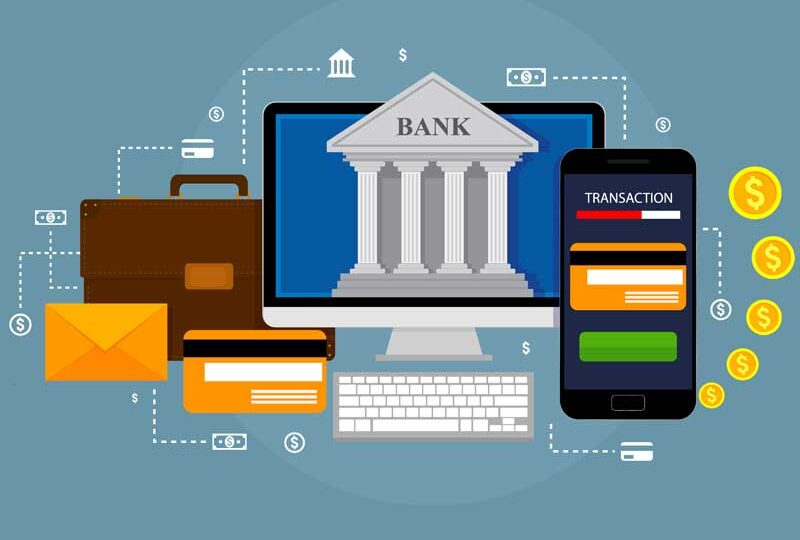The banking industry has witnessed a profound transformation over the past few decades, with technology being the primary catalyst. The days of long queues and manual paperwork for simple banking transactions are now a distant memory. Today, banks provide seamless services to customers, no matter where they are located, through robust technological platforms known as Core Banking Solutions (CBS). CBS has become the lifeline of modern financial institutions, enabling them to offer enhanced services, improve operational efficiency, and meet ever-evolving customer demands.
In this article, we will delve deep into core banking solutions—examining their definition, features, architecture, benefits, challenges, and the future of CBS. By the end of this comprehensive overview, you’ll understand why CBS is a critical component of the global banking ecosystem.
What is Core Banking?
Core banking refers to the centralized system that supports the day-to-day operations of a bank and its branches. CBS acts as the technological infrastructure that allows customers to access and manage their accounts, perform transactions, and access banking products from any branch or digital channel. The term “core” refers to essential banking services such as opening and maintaining accounts, processing deposits, withdrawals, loans, and payments.
Core banking systems integrate and automate the operations of multiple branches of a bank, allowing them to function as a single, cohesive entity. This centralization ensures uniformity in services, minimizes manual errors, and facilitates real-time processing of transactions.
Evolution of Core Banking Solutions
Historically, banks operated in a siloed manner. Each branch maintained its own records, accounts, and ledgers. If a customer wanted to access their account, they had to visit their home branch. The lack of connectivity between branches made inter-branch transactions complex and time-consuming. However, with the rise of computers and network technology, banks began to adopt centralized systems in the late 20th century.
The development of CBS was driven by several key factors:
- Technological Advancements: The proliferation of mainframes and later, distributed computing systems, enabled banks to centralize their operations.
- Increasing Customer Expectations: Customers wanted more convenience, such as accessing their accounts from any branch or using ATMs.
- Operational Efficiency: Centralization reduced redundancies, streamlined operations, and lowered the costs associated with maintaining separate systems at each branch.
Today, CBS is a standard across banks, allowing them to operate in real-time, provide better customer services, and innovate with new products.
Key Features of Core Banking Solutions
Core banking systems offer a wide range of features that cater to the operational and customer-service needs of banks. The following are some of the most important features of CBS:
1. Centralized Data Management: CBS maintains a centralized database, which is accessible from all bank branches and digital channels. This ensures uniformity in customer data and transaction records.
2. Real-Time Transaction Processing: Whether a customer is depositing money, withdrawing cash, or transferring funds, CBS ensures real-time processing of transactions, enhancing customer experience.
3. Multi-Channel Support: CBS integrates with various banking channels such as internet banking, mobile banking, ATMs, and point-of-sale (POS) systems, providing customers with multiple access points to their accounts.
4. Automation of Banking Operations: CBS automates repetitive tasks such as interest calculation, account reconciliation, and statement generation, reducing manual errors and improving operational efficiency.
5. Robust Security and Compliance: Banks must comply with stringent regulations, and CBS provides the necessary security frameworks, including data encryption, multi-factor authentication, and audit trails to meet regulatory requirements.
6. Loan and Credit Processing: CBS supports loan origination, disbursement, repayment scheduling, and credit analysis, making it easier for banks to manage their lending activities.
7. Flexible Reporting and Analytics: CBS provides advanced reporting and analytical tools, allowing banks to generate insights about customer behavior, financial performance, and market trends.
8. Customer Relationship Management (CRM): Modern CBS platforms come with integrated CRM tools to manage customer interactions, enabling banks to offer personalized services and build better relationships.
Architecture of Core Banking Solutions
Core banking systems have evolved from monolithic architectures to more modular, flexible, and scalable designs. The architecture of CBS typically consists of the following components:
1. Back-End Systems: These systems manage core banking functions such as account management, transaction processing, and general ledger management. The back-end systems are usually centralized and handle high volumes of transactions.
2. Middleware: Middleware serves as the communication layer between the back-end systems and various front-end applications. It ensures data consistency and supports integration with third-party services like payment gateways or regulatory databases.
3. Front-End Applications: Front-end applications include customer-facing interfaces such as internet banking portals, mobile apps, and ATM systems. These applications interact with the back-end systems via middleware.
4. Database Management System (DBMS): The core banking system relies on a DBMS to store and retrieve customer data, transaction records, and other essential information. Modern CBS platforms use distributed databases to ensure high availability and disaster recovery.
5. APIs and Integration Frameworks: Banks often integrate CBS with external systems like credit bureaus, payment networks, and fintech services through APIs. These integration frameworks enable seamless communication between the core banking system and external entities.
Benefits of Core Banking Solutions
The implementation of core banking solutions offers several significant benefits for banks, customers, and other stakeholders:
1. Improved Customer Experience: With CBS, customers can perform transactions from any branch or through digital channels, ensuring convenience and accessibility. Real-time processing and 24/7 availability enhance the overall banking experience.
2. Operational Efficiency: CBS automates several back-office tasks, reducing the need for manual intervention. This improves efficiency, minimizes errors, and helps banks reduce operational costs.
3. Faster Product Rollout: Banks can quickly launch new products and services on CBS platforms, as they can easily configure interest rates, product features, and promotional offers within the system.
4. Regulatory Compliance: CBS platforms are designed to adhere to regulatory frameworks, including anti-money laundering (AML) laws, Know Your Customer (KYC) requirements, and other financial regulations. The system generates audit trails and compliance reports, making it easier for banks to meet regulatory requirements.
5. Data-Driven Decision Making: By consolidating customer data and transaction records, CBS provides banks with valuable insights into customer behavior and financial trends. This data can be used to make informed decisions, such as risk assessment, market segmentation, and targeted marketing.
6. Enhanced Security: CBS platforms are equipped with advanced security measures such as encryption, authentication, and intrusion detection systems. This ensures the safety of customer data and reduces the risk of fraud.
7. Scalability: Modern CBS platforms are designed to handle large volumes of transactions and can scale easily as the bank’s customer base grows. This makes CBS a future-proof investment for banks looking to expand their operations.
Challenges in Implementing Core Banking Solutions
While CBS offers numerous benefits, implementing and maintaining such systems comes with its own set of challenges:
1. High Initial Costs: The upfront investment in core banking systems, including hardware, software, and training, can be substantial. Smaller banks may struggle with these costs, although cloud-based CBS solutions have made adoption more affordable.
2. Integration Complexity: Banks often use legacy systems for certain operations, and integrating these with modern CBS platforms can be complex. Seamless integration requires careful planning and testing.
3. Data Migration: Migrating data from legacy systems to CBS can be a daunting task. Ensuring data integrity, accuracy, and security during migration is a significant challenge.
4. Security Risks: As CBS platforms are connected to various digital channels, they are exposed to cybersecurity threats such as hacking, phishing, and data breaches. Banks must invest heavily in security measures to protect against these risks.
5. Continuous Upgrades: To stay competitive and compliant with regulations, banks must continuously upgrade their CBS platforms. This involves ongoing costs and resources, as well as potential disruptions to services during the upgrade process.
6. Change Management: Implementing CBS often requires a cultural shift within the organization. Employees need to be trained on new processes, and resistance to change can slow down the adoption process.
Future Trends in Core Banking Solutions
The future of core banking is closely tied to technological advancements, and several trends are shaping the next generation of CBS:
1. Cloud-Based CBS: More banks are moving to cloud-based CBS platforms, which offer greater scalability, flexibility, and cost efficiency. Cloud solutions reduce the need for large IT infrastructures and provide banks with the agility to adapt quickly to market changes.
2. Artificial Intelligence (AI) and Machine Learning (ML): AI and ML are increasingly being integrated into CBS platforms to improve fraud detection, customer service (through chatbots), and predictive analytics for risk management and marketing.
3. Open Banking and APIs: Open banking platform initiatives, supported by APIs, allow banks to securely share data with third-party fintech providers. This enables the development of innovative financial products and services, enhancing customer choice and competition.
4. Blockchain: Blockchain technology is gaining traction in the banking industry for its potential to enhance security, reduce fraud, and streamline transactions. While still in its early stages, blockchain could eventually be integrated into CBS for faster, more secure financial operations.
5. Personalization through Big Data: Core banking systems are increasingly leveraging big data analytics to offer personalized banking experiences. By analyzing customer behavior, CBS platforms can provide tailored financial products, improve customer retention, and increase profitability.
Conclusion
Core Banking Solutions are an integral part of the modern banking ecosystem, providing the technological backbone for financial institutions to operate efficiently, serve customers effectively, and remain competitive in an ever-evolving market. From improving operational efficiency to enhancing customer experience, CBS has revolutionized the way banks operate.


